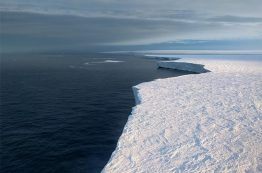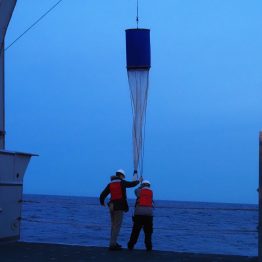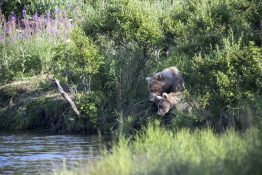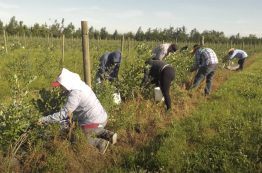Using the most advanced Earth-observing laser instrument NASA has ever flown in space, a team of scientists led by the University of Washington has made precise measurements of how the Greenland and Antarctic ice sheets have changed over 16 years. In a new study published April 30 in the journal Science, researchers found the net loss of ice from Antarctica, along with Greenland’s shrinking ice sheet, has been responsible for 0.55 inches (14 millimeters) of sea level rise to the global ocean since 2003.
Read more at UW News »Undergraduate research takes to the high seas
Being in the middle of the ocean on a giant research vessel can be surreal — in every direction, there’s water as far as the eye can see. For 17 seniors in the UW School of Oceanography, this was their reality for nearly two weeks as they conduct research for their thesis off the coast of South Africa. “You’re so far from the coast, you forget the rest of the world is there,” says Ashley Lobao, an Oceanography student.
Read more »Sockeye salmon fuel a win-win for bears and people in Alaska’s Bristol Bay
In a world where valuable natural resources can be scarce, nature often loses when humans set their sights on something they want. But a new study published in the journal Ecological Applications shows that doesn’t always have to be true. Researchers found that with proper management of salmon fisheries, both humans and bears — who depend on a healthy supply of the fatty, oily fish — can thrive.
Read more »Spirits kept afloat at the School of Oceanography
A flip of a crepe, a picture of a pet, home experiments testing the best pretzel topping…these are just a few of examples of how people in the UW School of Oceanography are trying to keep the feeling of community afloat. Like nearly all of us, the school went from in-person interaction with colleagues, classmates and professors to virtual interaction in the blink of an eye.
Read more »Agricultural pickers in US to see unsafely hot workdays double by 2050
The global pandemic has put a focus on essential workers, those we rely on for basic services. Workers who pick crops, from strawberries to apples to nuts, already face harsh conditions harvesting in fields during summer harvest months. Those conditions will worsen significantly over the coming decades. A new study from the University of Washington and Stanford University, published online in Environmental Research Letters, looks at temperature increases in counties across the United States where crops are grown.
Read more at UW News »





